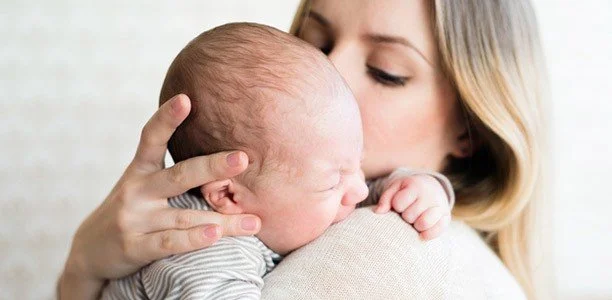
How Understanding Your Inner Child Can Help Your Adult Relationships
6 mins read. Written by Brenda Tan.
How Understanding Your Inner Child Can Help Your Adult Relationships
Relationships can be challenging to navigate, especially as we grow into adulthood. We move from friendships and family ties into love and dating, which can be daunting, and unfortunately, not always positive.
We may find ourselves falling into the same troubling patterns of behaviour in our relationships, but do we understand why? Here’s how understanding our attachment styles can help.
Table of Contents
The Four Adult Attachment Styles
Anxious/Preoccupied Attachment
Avoidant/Dismissive Attachment
First dates are always a shiny new experience, the promise of something new making for excitement and anticipation. We seek to make the most of the date, trying to get to know the other person as well as we can to determine if there is a future. While getting excited to meet someone new is one of the best ways to ensure a successful first Kopi Date, knowing what you’re looking for in a partner is equally, if not more, crucial.
We may look to previous relationships or existing ideals, looking for our date to mirror certain positive traits while avoiding any ‘red flags’. What exactly determines our perception of ‘green flags’ or ‘red flags’, though? Understanding our attachment style, which is the way that we relate to other people, can provide some insight into that.
How are attachment styles formed?
Before we begin, let’s understand where our attachment styles stem from. From birth, the primary caregiver’s behaviour is a key determinant of the way the child forms and perceives close attachments with others. Children depend on their caregivers for comfort and support in times of distress and need, both physical and emotional.
When a child’s needs are not met, they become insecurely attached, seeking whatever was missing from their care. On the contrary, a child raised in a warm and loving environment whose needs are met by caregivers, even when not obviously expressed, will be better able to form secure attachments.
Why do attachment styles matter in adulthood?
You may be thinking how your childhood attachments to your parents are relevant for your grown-up self. Well, as much as we’d like to think that we’re all mature adults, the truth is that isn’t always the case. After all, our parents are imperfect, flawed human beings who made mistakes when raising us, and even when they tried their best, that wasn’t a guarantee that it was what we really needed from them.
Our parents formed the blueprints for what we thought close relationships should look and feel like, which in turn influences the relationships we seek out as adults.
Have you ever lamented to a friend about how you seem to end up dating the same kind of person over and over again? If your answer is yes, the good news is that blueprints can be redrawn, but first we need to identify where we’re going wrong. Let’s break down the different attachment styles, shall we?
The Four Adult Attachment Styles
Anxious/Preoccupied Attachment
The anxiously attached adult is a tough one. This can come from having an inconsistent pattern of care in childhood. Maybe a parent wasn’t always around, or the care they provided wasn’t always what you were looking for. Either way, this creates an uncertainty and- yep, you guessed it- anxiety surrounding your partner’s feelings and your relationship.
The anxiously attached adult looks like this:
Thought of being alone is anxiety inducing
Typically have low self-esteem while viewing others positively
Fear of abandonment
Worry that partners are not as invested in relationships as they are
Avoidant/Dismissive Attachment
For the avoidant adult, relationships can be a source of fear. You may find yourself resisting emotional connections with others, possibly due to an emotionally distant parent or rejection when expressing your needs in childhood. Does this sound like something you’ve ever said?
“I don’t like getting too close to people.”
“I’m okay with getting to know someone as long as it doesn’t get too deep.”
If the answer is yes, you may have an avoidant attachment style. Some other ways this may manifest include:
Perceive selves as ‘lone wolves’
High self-esteem and positive view of others
Do not want to depend on others or have others be dependent on them
Do not wish to seek social support or approval
Avoid emotional closeness
May suppress or hide feelings in emotional situations
Disorganised/Fearful-avoidant Attachment
This attachment style is a little more complicated- you can think of it as a combination of both anxious and avoidant behaviours. This typically occurs when a caregiver is also a perceived threat to the child, which leads to contradictory feelings about closeness in relationships.
Unstable behaviours in social relationships
Relationships are both source of fear and desire
Seek intimacy but have trouble trusting and depending on others
Poor emotional regulation and avoidance of deep emotional connections out of fear of getting hurt
Secure Attachment
The securely attached adult is like a rare Pokémon- precious and relatively hard to find. Secure attachment forms when a caregiver is emotionally present, responsive, and available, giving the child what they need when they need it. Here’s what they may look like in relationships:
Comfortable with openly expressing feelings and mutual dependence
Thrive in relationships but do not fear being alone
Do not seek approval from partners and have high self-esteem as well as a positive view of others
This may sounds like the ideal attachment style, and in some ways it is. Wouldn’t we all love to reflect the characteristics mentioned above? That said, there is no right or wrong attachment style, and all this serves is to identify our own unique needs and ways that we can strive to grow as people.
What this means for you
You probably now have a rough idea of your own attachment style. Remember that you don’t have to fit into only one category- you may find that you have different attachment styles in romantic relationships and friendships. Additionally, while attachment styles are mostly stable, they may also change following major life events or traumatic experiences. For example, a securely attached person may find themselves becoming more insecure after being in a toxic relationship or suffering a traumatic loss.
Rather than fixating on any labels, take this as a blueprint for ways to actively address the less healthy behaviours, and develop meaningful, healthy connections.
Unfortunately, most people tend to fall into the insecurely attached category, and many of us will have experienced challenging patterns of relationships in our lifetime. The good news is that self-awareness is half the battle won! When you go on your first Kopi Date, use this knowledge to identify your patterns of behaviour and communicate this to your date if it feels right. Having insight into your own insecurities and unhealthy tendencies and striving to work on them will help you to become the best partner you can be! After all, you have to understand yourself before you can expect others to understand you!
If you feel like it is too much for you to address on your own, don’t be afraid to speak to a professional- sometimes an objective perspective is just what you need to see the bigger picture.
Take our quiz to find out more about your attachment style!
Kopi Date is a startup that curates thoughtful 1:1 coffee dates at unique spaces in Singapore.
Simply share with us your story; what makes you, you. When your date has been scheduled, turn up at our partnered unique spaces for your date! You’ll be served with a complimentary coffee and a Kopi Date experience kit.
Kopi Date is a step away from the frustrations of online dating, transforming the overly digitised process into a humanised experience.









